We include products in articles we think are useful for our readers. If you buy products or services through links on our website, we may earn a small commission.
The Dangers of Sugar: Everything you Need to Know
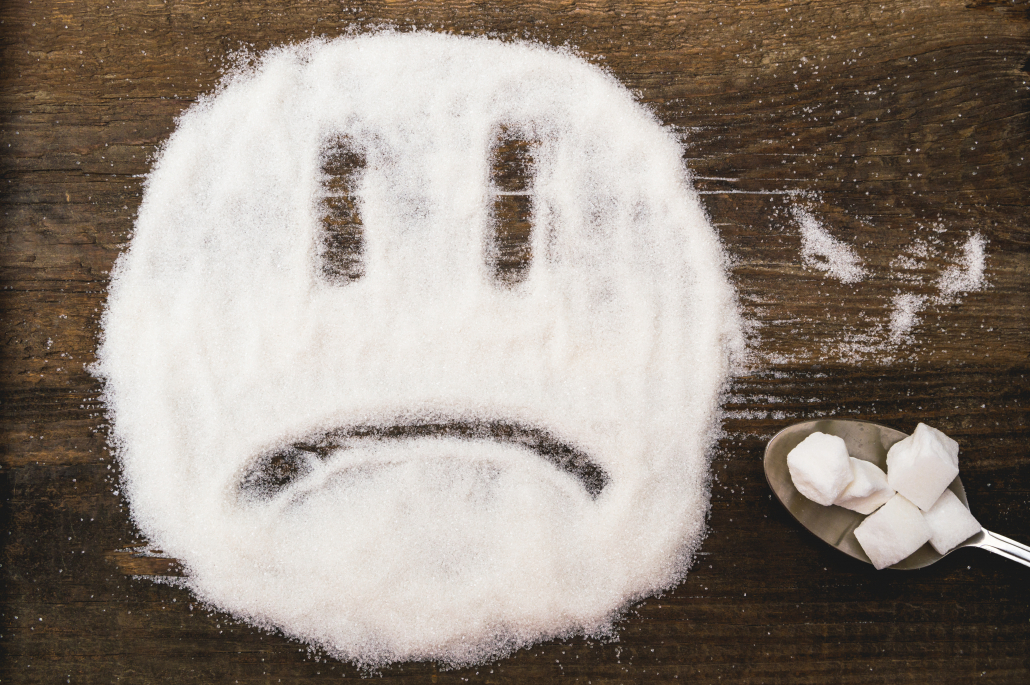
Table of Contents
- Where Sugar Comes From
- Dangers of Sugar: Diseases of Civilization
- Sugar is Addictive
- What Makes Sugar So Dangerous
- Sugar Causes Metabolic Syndrome
- Sugar Causes Premature Aging
- Sugar Causes Cognitive Decline
- Sugar Leads to Obesity
- Dangers of Sugar and Cancer
- Sugar is Dangerous for the Heart
- Do we Need to Eat Sugar?
- High-Fat Low-Carb Diet for Reducing the Dangers of Sugar
- Dangers of Sugar: The Takeaway
The dangers of sugar aren’t confined to eating candy and junk food. Sugar occurs naturally in all foods that contain carbohydrates, including fruits, vegetables, grains, and dairy.
And just because something is “natural,” doesn’t mean it’s healthy. For sugar, as with most other addictive substances, the danger comes from a combination of how much sugar you eat, how often, and for how long.
When you follow the recommended diet of 3 meals a day based on high-carb plant foods like grains and fruits, you are consuming chronically high amounts of sugar.
The average American consumes a staggering 3 pounds of sugar each week, much of it hidden in plant-based products and processed foods. Many so-called “healthy,” low-fat food options, like tomato sauce and low-fat yogurt, are packed with sugar — even if they don’t seem all that sweet.
Here’s what you need to know about how and why sugar can be dangerous.
Where Sugar Comes From
Sugar was once a delicacy, restricted to a handful of tropical locales and islands where its namesake sugarcane plant grew. Since the 1800s, however, sugar has progressively crept into more and more foods.

Today, it’s common for food manufacturers to bump up the sugar content to maintain flavor and texture when they produce “low-fat” and “non-fat” products. That fancy drink from your coffee shop probably contains way more sugar than you’d expect. So does that “lite” dressing on that “healthy” salad you had for lunch.
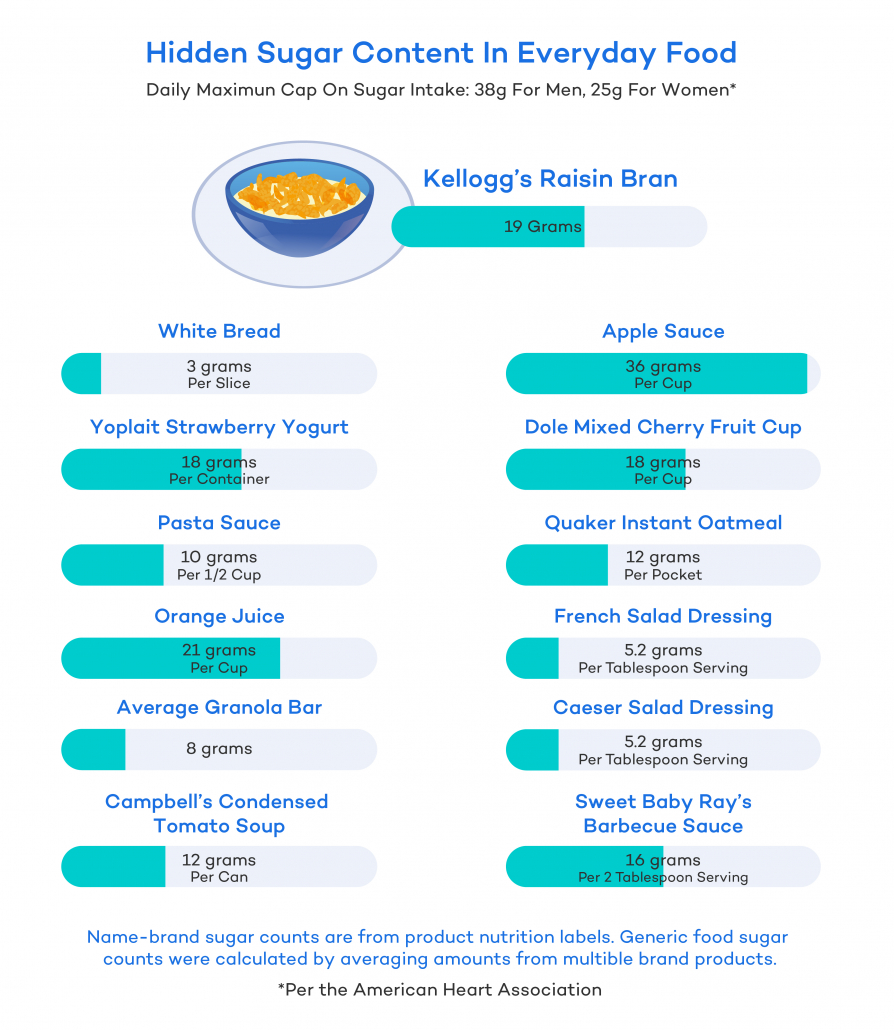
What was once a rare substance has become nearly inescapable. Adding to the dangers of sugar are the types of sugar used today; much of it comes in the form of high-fructose corn syrup. HFCS seems to be even more metabolically damaging than other types of sugar, like sucrose or glucose. In addition, there are over 60 types of added sugars in the Standard American Diet.
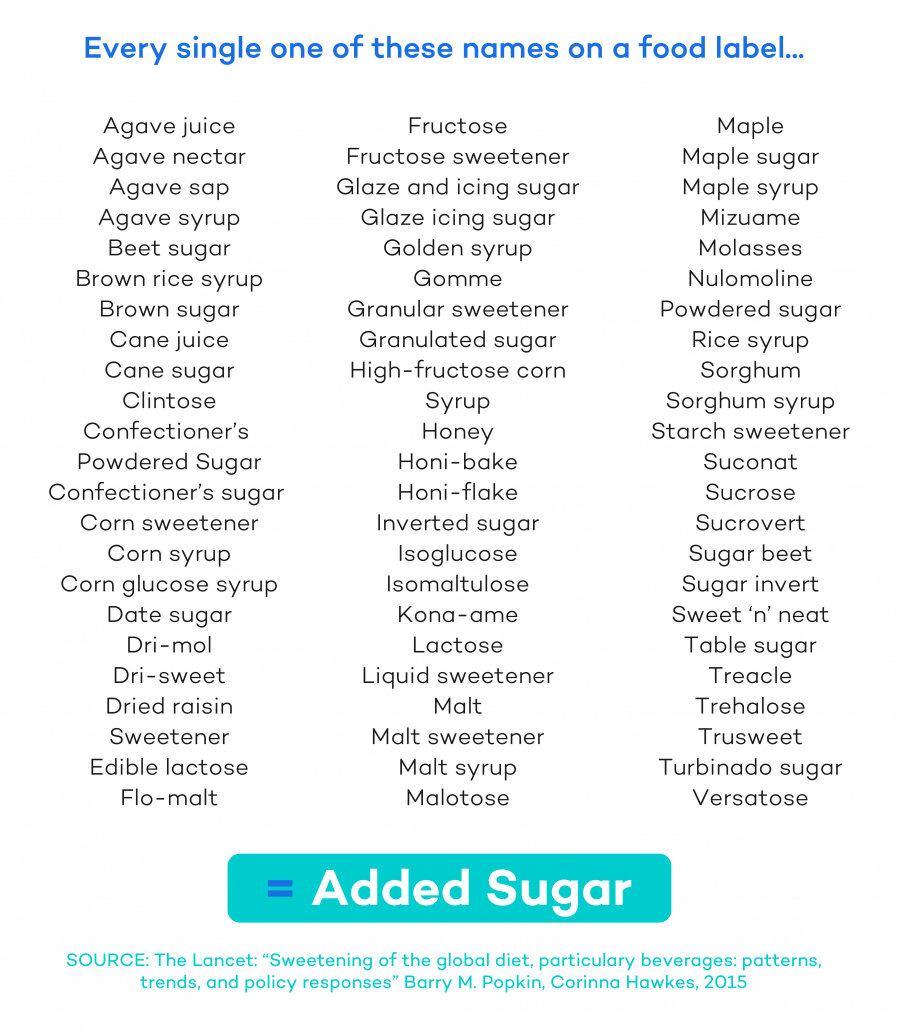
Dangers of Sugar: Diseases of Civilization
These unexpected sugar sources add up quickly. The average American eats 126 grams of sugar a day — and the average American child eats even more.
All that sugar is in large part responsible for what doctors refer to as “the diseases of civilization :”
- Obesity
- heart disease
- hypertension
- type 2 diabetes
- epithelial cell cancers
- inflammatory diseases (including autoimmune diseases, bowel disorders, osteoporosis, infertility, and more)
We call these the diseases of civilization because they were virtually non-existent in hunter-gatherer societies. It’s no coincidence that the diets of disease-free hunter gatherer societies were fueled by animal fats , extremely low in natural sugars, and of course, completely free from processed sugars.
Sugar is Addictive
The addictive nature of sugar was once an evolutionary boon when, for the vast majority of human history, sweet and carbohydrate-dense food was extremely rare. But in our modern lives where carbs are everywhere, the same neural networks that once helped our ancestors survive, are now killing us.
The Carbohydrate Insulin Model of Sugar Addiction
When you eat carbohydrates–and remember all grains, fruits, and vegetables are carbohydrates–nearly all of them get broken down into glucose (simple sugar). These simple sugars are sent into the blood, raising blood sugar levels.
The body responds to high blood sugar by secreting a hormone called insulin. The job of insulin is to drive glucose into cells and convert excess sugar into fat. This fat accumulates in and around your organs and shows up on your bottom and belly.1
But even though sugar makes you fat, instead of feeling satiated, elevated insulin levels trigger more hormones that increase hunger and heighten the perceived pleasantness of sweet tastes.
Sugar Activates Opiate and Dopamine Receptors
At the same time sugar activates opiate and dopamine receptors in the brain. Ironically, these are the same “happy” chemicals that cause us to feel good when hanging out with loved ones and good friends.
Studies suggest that every time we eat sweets, we are reinforcing the neural pathways associated with addiction, causing the brain to become increasingly hardwired to crave sugar.
This is why one of the main dangers of sugar is that it creates an unhealthy addictive cycle like any other drug. Researchers in France have determined that the rewards experienced by the brain after consuming sugar are even “more rewarding and attractive” than the effects of cocaine.
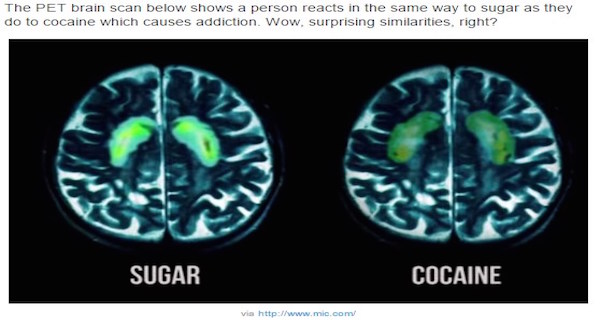
Sugar on the brain? Image from factualfacts
These findings are also reflected in research on rats from Connecticut College showing that Oreo cookies activate more neurons in the brain’s pleasure center than cocaine. And yes — the rats would eat the filling first just like humans.
Sugar Addiction from an Evolutionary Perspective
When looking at both hormone and neurotransmitter pathways stimulated by consuming sugar, it becomes clear that we are hardwired for sugar addiction. But why?
As mentioned earlier, for most of human history, sweet foods and carbohydrates of any kind were extremely rare. Essentially none of the fruits and vegetables that we have today existed in the natural environments of our hunter-gatherer ancestors.
So on rare occasions when our ancestors came across a ripe fruit-bearing plant or a beehive, their bodies told them to eat as much as possible.
Since we know that one of the jobs of insulin is to turn sugar into fat, when the body is crying out for carbs it is really saying, “make me as fat as possible while this rare source of sugar is around.”
The bodies of our ancestors would use these small amounts of stored fat for energy during leaner times, and when they had to fast between successful hunts.
In contrast, modern eating is anything but lean. We live in an endless buffet of high-carbohydrates foods. In this environment sugar’s innate palatability is one of its greatest dangers.
Considering the addictive power of sugar, it’s no surprise that most of us eat too much of it. Let’s explore how too much sugar affects our physical and mental health.
What Makes Sugar So Dangerous
Once ingested, sugar begins a series of damaging chemical reactions within your body. Sugar triggers insulin production, raises stress hormones, and depletes minerals and endogenous antioxidants like glutathione. Sugar is pro-oxidant, pro-inflammatory, and pro-stress.
These effects are the root of how chronic sugar intake can lead to numerous chronic diseases. Let’s take a closer look.
Sugar Causes Metabolic Syndrome
Chances are you’ve never heard of metabolic syndrome. You may be surprised that it’s a problem afflicting over 70 million Americans.
The most obvious sign of metabolic syndrome is simply being overweight, but under the surface, biochemical chaos is taking place.
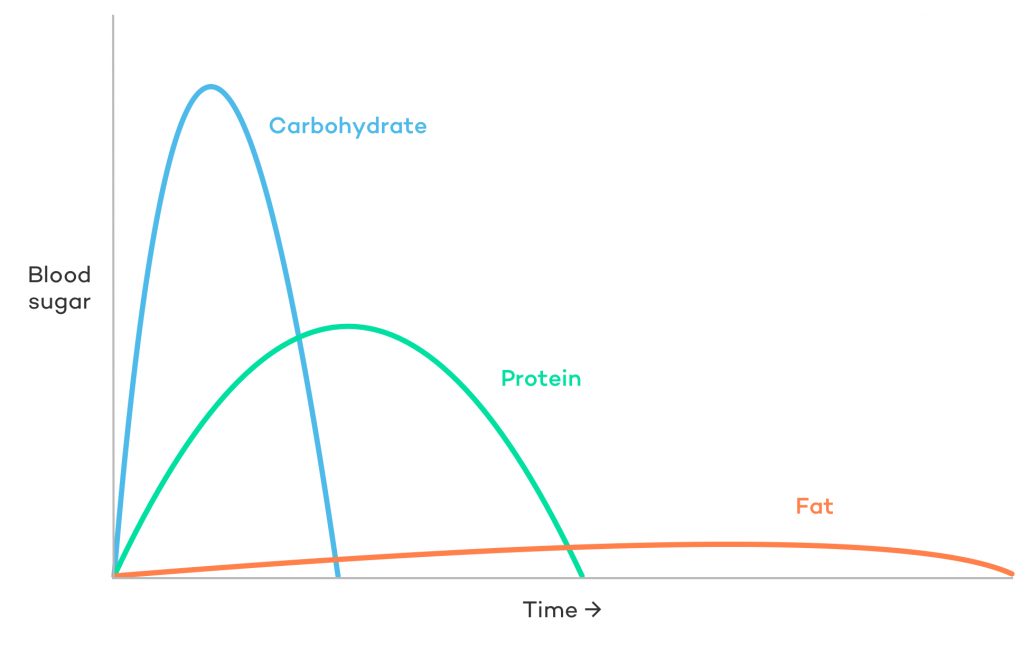
Sugars and other carbs spike blood sugar
How does Metabolic Syndrome Begin?
As we discussed above, when you eat carbohydrates they raise blood sugar. To keep your blood sugar from getting toxically high, your body secretes insulin that forces some of the sugar into your cells and turns the rest into body fat.
This process of insulin secretion and cellular response works well at first. But over years of eating foods high in carbohydrates and added sugars, the cells in your body become less and less responsive to insulin. Eventually, these cells can no longer ‘absorb’ sugar or process it into usable energy via mitochondrial respiration.
Sugar is left to linger in the bloodstream at toxic levels leading to glycation, inflammation, damage to your glycocalyx, and many associated diseases and disorders. Both complex carbs and simple sugars contribute to these effects because both are converted into glucose.
Sensing insulin’s failure to balance blood sugar, your pancreas responds by dumping more insulin into your bloodstream, but this type of overcompensation only compounds the problem. Insulin resistance has begun.
Metabolic disease describes the co-occurrence of related health issues including:
- High fasting blood sugar
- Excess insulin
- Obesity
- High triglyceride levels–a type of fat found in the blood associated with the risk of heart disease.
- Low HDL cholesterol levels. HDL is often referred to as “good cholesterol” because it can clear fat from your arteries, protecting against heart disease.
- High blood pressure.
Sugar and Diabetes
Features of metabolic disease including obesity, excess insulin, and high blood sugar, existing together is referred to as pre-diabetes. With continued consumption of high-carbohydrate foods, metabolic disease can develop into full-blown type-II diabetes.
Type-2 diabetes occurs when chronically high blood sugar levels are coupled with insulin resistance, and damaged insulin-creating cells in the pancreas. Type-2 diabetes is responsible for 90% of all diabetes cases, and consumption of refined sugars is a significant risk factor.
Studies show that consumption of sugar can directly lead to type-2 diabetes by causing inflammation, fatty liver disease, and insulin resistance.
Numerous studies have found that regularly drinking sugar-sweetened beverages increases your risk of type 2 diabetes by 25%.
Sugar-sweetened beverages are so harmful that having just one per day increases your risk of type-2 diabetes by 13%, even without the telltale weight gain.
We can also see the startling role that sugar plays in type 2 diabetes when considering that countries with the highest sugar consumption also have the highest rates of type 2 diabetes. And no surprise, countries with the lowest sugar consumption, have the lowest rates.
Sugar Causes Premature Aging
Another danger of sugar is that it contributes to the biochemical markers of premature aging. The chronic inflammation that sugar enables can wreak havoc on the way your body functions. It can even damage your mitochondria by forcing them to run off of highly reactive, highly oxidative fuel.
Sugar also ages the body when sugar molecules in our bloodstream combine with proteins and minerals to form advanced glycation end products, or AGES.
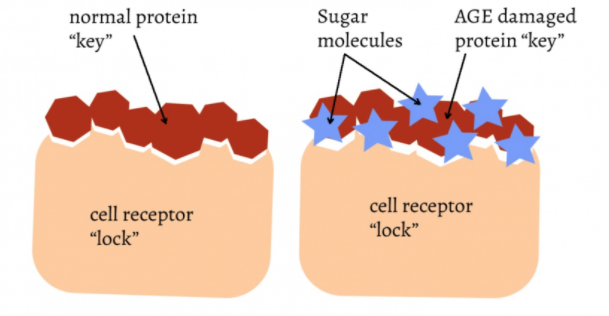
It is apt that these compounds are called AGE’s, given how directly they contribute to age-related diseases. Research shows that the glycation-oxidation process is strongly associated with:
- Reduced immune system strength
- Kidney failure
- Eye damage, and other complications of diabetes
- Diseases such as PCOS and insulin resistance
- High blood pressure
- Progressive heart disease
- Cancer metastasis and resistance to chemotherapy
Skin Aging
The dangers of sugar can also leave their mark on your skin.
One of the most direct ways sugar can affect complexion is by triggering the production of stress hormones, including adrenaline, noradrenaline, and cortisol. ] These hormones have a catabolic effect on one’s skin tissues, meaning they cause unwanted tissue breakdown.
The first area to show signs of hormonal damage? More often than not, it’s the thin, delicate skin of the face.
Sugar consumption can also lead to the development of age spots, also called lipofuscin. These spots are a visible manifestation of AGE’s and ALE’s: cross-linked networks of sugars, proteins, iron, and oxidized omega-6 fats.
You may have heard how antioxidants are good for the skin, yet sugar can ‘burn up’ minerals like zinc, and antioxidants like vitamin C during its metabolism. Low vitamin C levels lead to less cellular regeneration, lower collagen production, and reduced skin cell turnover.
If a high-sugar diet has aged your skin, switching to a high-fat, low carb keto diet may boost your body’s production of anti-aging hormones, like pregnenolone, that have a restorative effect.
Sugar Causes Cognitive Decline
That one of the most common dangers of sugar is its ability to cause cognitive problems might seem surprising at first. In people who are metabolically healthy, sugar intake can lead to short-term mental energy or even euphoria.
But these effects are transient and misleading. What people call a ‘sugar high’ may really be part of the stress response that many have grown accustomed to.
All this stress takes its toll. In the long run, sugar intake can inflame one’s brain and lead to a variety of inflammatory problems. High blood sugar has been so consistently associated with Alzheimer’s disease that some scientists call Alzheimer’s “type 3 diabetes.”
According to 2015 review looking at how insulin resistance factors in cognitive decline found that diabetes and Alzheimers overlap by around 80%.
Research has shown that chronically elevated blood sugar and insulin can damage the hippocampus, an area of the brain that shows signs of Alzheimer’s ealier than most. The brain of someone with Alzheimer’s may well be swimming in glucose, but unable to use it or process it due to insulin resistance.
Since this damage occurs along a continuum, insulin resistance may be both a cause and effect of neurological conditions. If you want your brain to stay healthy in the long run, keep those insulin spikes to a minimum by running on ketones instead.
Sugar Causes infertility
The dangers of sugar are not just confined to you–sugar can dramatically reduce your ability to bring life into the world.
The insulin spikes caused by sugar consumption can create imbalances in hormones critical to pregnancy, including pregnenolone and progesterone.
Considering that even healthy women become slightly less insulin sensitive during the later stages of pregnancy, it’s important to start off from a healthy (i.e, insulin-sensitive) baseline. Supplements like chromium and spices like cinnamon may help with insulin sensitivity, but not as much as a low-carb diet.
Sugar may also cause infertility in less direct ways. The AGE’s produced by sugar metabolism may reduce fertility in both men and women if they build up within the reproductive system.
PCOS
Diets high in carbohydrates and added sugars increase blood glucose levels resulting in high insulin levels and oxidative stress–primary factors leading to Polycystic Ovarian Syndrome (PCOS).
High insulin can cause high levels of male hormones in women. These hormonal imbalances cause follicles that were supposed to mature and release from the ovary, to remain attached and continue to grow, or to leave behind a sac. The remaining sac can reseal and fill with fluid causing a cyst.
For women with PCOS, studies show that eating diets high in carbohydrates leads to oxidative stress and cellular inflammatory responses.
Thankfully, studies show that that adhering to a low-carb, high-fat ketogenic diet can reduce and even reverse PCOS.
Endometriosis
Like PCOS, endometriosis is correlated with hormone imbalances and inflammation. In this case, an excess of estrogen. Studies show that sugar intake is linked to endometrial cancer.
One of the ways that sugar factors in endometriosis is by triggering the immune system to produce high levels of inflammatory molecules called prostaglandins. These molecules may feed the already-inflammatory nature of endometriosis.
Sugar Leads to Obesity
One of the most common dangers of sugar is how it leads to obesity. At first glance, this might seem obvious, since sugary foods are usually hyper-palatable and lead to overeating. But sugar’s most obesogenic effect is actually its ability to cause metabolic problems.
New research has shown that sugar can promote insulin sensitivity in fat cells while simultaneously promoting insulin resistance in muscle cells and vital organs. In other words, sugar can hurt your body composition by diverting nutrients away from important areas and shuttling them towards fat.
Eating a diet rich in saturated fats, on the other hand, has the opposite effect. Many saturated fats promote an ideal balance: physiological insulin resistance in fat cells and insulin sensitivity in muscle cells. Over time, this unique combo may lead to better distribution of nutrients in the body.
Dangers of Sugar and Cancer
In the 1920s, future Nobel Prize-winner Otto Warburg discovered that certain cancers feed off of glucose via a specialized (i.e, highly selfish) metabolic pathway.

The implication, supported by an extensive 2017 review of numerous studies, is that some cancers can be ‘starved’ by avoiding any and all sugars.
According to cancer specialist Lewis Cantley from the Meyer Cancer Center in New York, “having high levels of insulin is likely to drive cancer. And what drives insulin levels is sugar.” Many MD’s — including Doctor Kiltz — agree.
Sugar is Dangerous for the Heart
Sugar has been shown to increase the risk of developing heart disease. It’s likely that this increased risk is a culmination of all of sugar’s other downsides: increased inflammation, higher triglycerides, higher, blood pressure.
Consuming too much sugar in the form of sugary drinks is also problematic: it’s been linked to atherosclerosis. One study of over 30,000 people found that those who consumed roughly twice as much sugar had a 38% greater chance of dying from heart disease.
Do we Need to Eat Sugar?
Now for some good news–the dangers of sugar are easy to avoid. This is because sugar, along with ALL carbohydrates, is completely non-essential. That means we do not need any carbs in our diet.
This is not a fringe belief. The 2005 textbook “Dietary Reference Intakes for Energy, Carbohydrate, Fiber, Fat, Fatty Acids, Cholesterol, Protein, and Amino Acids,” by the U.S. Food and Nutrition Board of the Institute of Medicine, states, “The lower limit of dietary carbohydrate compatible with life apparently is zero, provided that adequate amounts of protein and fat are consumed.”
When we cut out sugar and other carbs, the body converts fat into fatty-acid molecules called ketones. These become the main energy source for most of your cells.
The remaining red blood cells, along with some of the cells in your brain and kidneys require glucose. But your body can make all the glucose it needs from protein and fat (amino acids and fatty acids) in a process called gluconeogenesis.7
High-Fat Low-Carb Diet for Reducing the Dangers of Sugar
The best way to reduce the risks of sugar consumption is a holistic one: avoid it. Complete avoidance is easier than you might think, especially if you follow a low carb, high fat way of eating.
Numerous studies show that reducing carbs and loading up on healthy fats reduce sugar cravings.
Additionally, HFLC diets have been shown to reduce and reverse many of the problems caused by high sugar consumption, including:
- Lower fasting blood sugar
- Lower fasting insulin levels
- Less glycation
- Reduced inflammation
- A reduction in the likelihood of developing or worsening inflammation-related diseases, including heart disease, cancer or a metabolic disease such as diabetes.
Eating a low glycemic diet, high in healthy fats has the added benefit of making you feel fuller longer, which decreases cravings for processed foods, and helps you maintain a healthy weight.
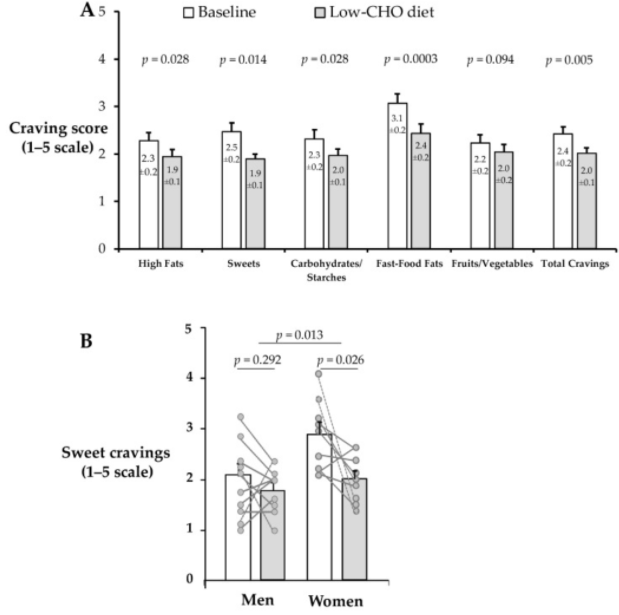
Artificial Sweeteners: A Note of Caution
If you crave sweets, some non-sugar natural sweeteners can help fulfill cravings without playing havoc with your weight and blood sugar. But not without dangers of their own.
However, we recommend using sweeteners very sparingly. A recent study found that drinking two or more of any kind of artificially sweetened drink a day was linked to an increased risk of clot-based strokes, heart attacks, and early death in women over 50.
Sweeteners activate the same neural reward pathways as sugar. When you consume artificial sweeteners, you are interfering with your body’s natural reward centers. You eat and crave sweet things because sweet foods in the natural environment usually mean loads of quick calories.
But alternative sweeteners provide incomplete satisfaction by sending mixed signals through the metabolic system; The first signal is that you’ve eaten something sweet. The second is that you haven’t actually consumed the calories associated with the sweetness. The body responds by seeking more calories.
Common artificial sweeteners including aspartame, sucralose, or saccharin, cause insulin resistance by fertilizing toxic gut bacteria (firmicutes).
This bacteria takes energy from your food and stores it as fat. After a 5-day research period where participants were fed the FDA’s maximum dose of saccharine, 60% developed glucose intolerance. Stevia, monk fruit, xylitol, or erythritol are probably better choices.
Dangers of Sugar: The Takeaway
The average American gets around 50% of their calories from carbohydrates and 16% from added sugars alone.
This chronically high level of sugar consumption is a direct factor in numerous diseases and disorders, including diabetes, heart disease, cancer, infertility, and various autoimmune and neurodegenerative diseases.
Therefore sugar is dangerous.
There are many different sugar-free and low-carb diet options to reduce and avoid sugar. Studies suggest that a low-carb, high-fat ketogenic diet can reduce sugar cravings while reducing the severity and even reversing diseases and other common problems associated with high sugar consumption.





















